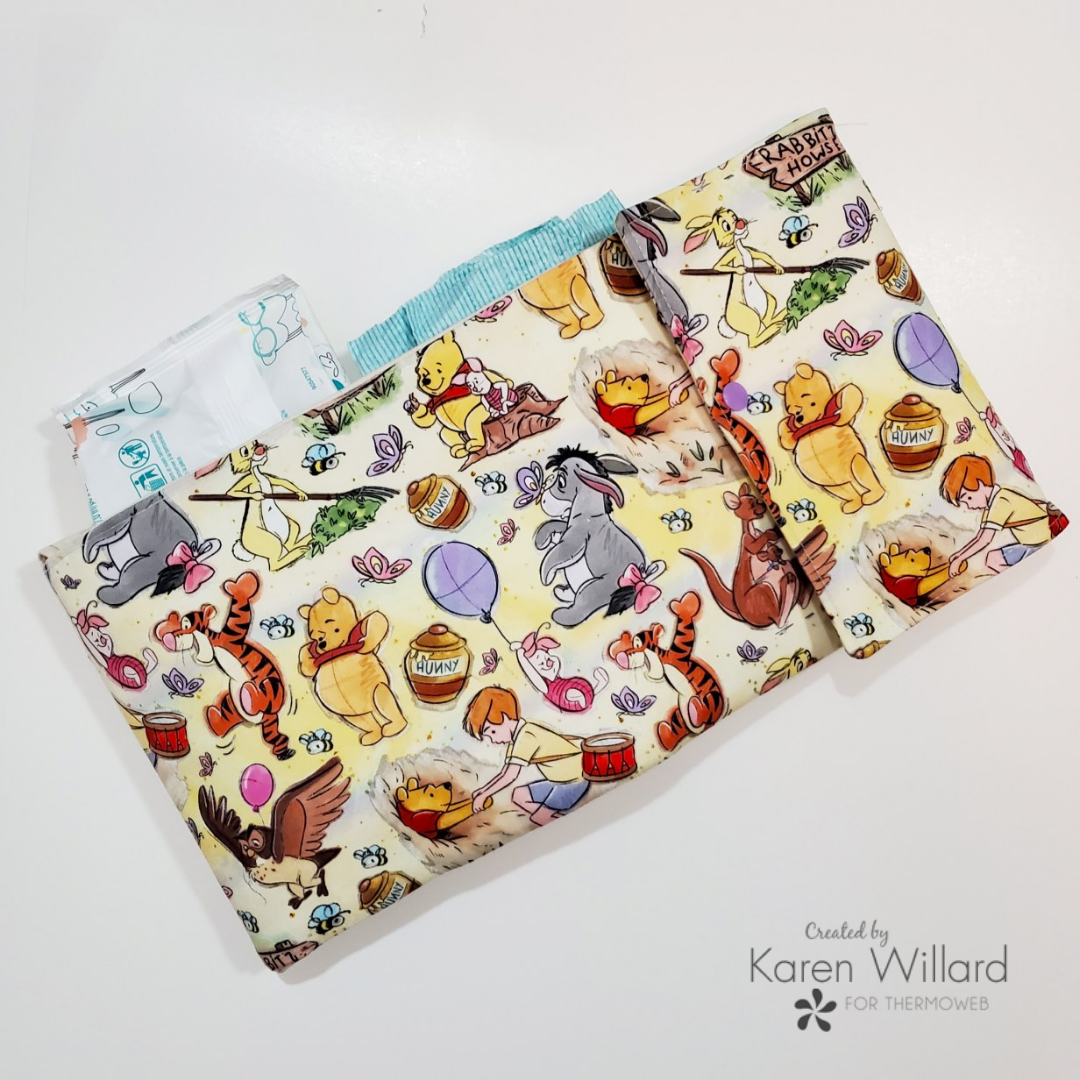
We have a new designer joining our Education Team! We hope you’ll help give a warm welcome to Karen Willard! We think you’re going to love her style and creative projects! Be sure to leave her a comment today for her first project and follow her on Instagram!

Here’s a little more about Karen before you jump into today’s project!
My name is Karen Willard and I reside in Central Virginia. I have an amazing husband and a wild toddler, as well as three adult stepsons. I have been creative for as long as I can remember, but I have always had a passion for business. I have a Bachelor’s Degree in Business Administration and an MBA from Gardner-Webb University. After graduation, I spent a bit of time in the corporate world and also worked as an adjunct professor at a local community college.
Despite all of the time I spent in school, I still explored my creative side heavily, and continue to do so to this very day. I have been sewing for around 23 years and I’m also a fine artist and illustrator and I love working with acrylics, colored pencils, and watercolors. My success as an artist and designer began with my 8-year career as a custom shoe designer, painting shoes for thousands of clients worldwide. For the last 2 years, I have made sewing my main focus. I am now am a full-time seamstress, creating outrageous handbags and accessories for clients worldwide. I love bright colors, interesting textures, and unique shapes. I am thrilled to be part of the Therm O Web Design Team and look forward to creating with you!
Travel Diaper Changing Pad
Supplies
1 Yard of Main Fabric
1 Yard Lining Fabric
1 package of HeatnBond Iron-On Vinyl
1 package of HeatnBond High Loft Sew-In Fleece OR 1.5 yards of HeatnBond Fusible Fleece
2 Yards of HeatnBond Soft Woven Fusible Interfacing
1 Set of KamSnaps & Snap Setter This can also be closed with hook & loop tape
1 Pilot Frixion Pen (optional)
Rotary Cutter
Sharp Shears
Seam Allowance throughout the patter is 1/4” and topstitching and basting are done at ⅛”
When I considered what items would be useful and last the entirety of my child’s infancy, no one could have told me that my expensive changing table would be one of the things I used less and less as time passed and as he became more mobile. I often found myself changing him wherever I was in the house, and with 3 floors, running upstairs isn’t always optimal. I’ve drafted a solution to that problem and only wish I had thought of it 2.5 years ago. This changing pad is a perfect gift for parents-to-be and can even be used on the go and is very stroller friendly. The vinyl layer can easily be wiped clean and the pad itself, once complete is hand-wash only.
This pattern is simple and uses only rectangles, so in theory, you can easily alter the length or width to suit your needs.
Changing Pad Pattern Pieces
CHANGING PAD 17” W x 24.5” L
Cut the following:
- 1 Main Fabric
- 1 Backing (or Lining) Fabric
- 2 HeatnBond Soft Woven Fusible Interfacing
- 1 Sew In or Fusible Fleece
- 1 HeatnBond Iron-On Vinyl
SIDE FLAP 1 17”W x 8.5”L
Cut the following:
- 1 Main Fabric
- 1 Lining Fabric
- 2 HeatnBond Soft Woven Fusible Interfacing
- 1 Fusible Fleece
SIDE FLAP 2 10” W x 8.5” L (For this tutorial, I have used 2 of my main fabric for these pieces) Cut the following:
- 1 Main Fabric
- 1 Lining Fabric
- 2 HeatnBond Soft Woven Fusible Interfacing
- 1 HeatnBond Fusible Fleece
POCKET FOR SIDE FLAP 1: 17” W x 10” L
Cut the following:
- 1 Main or Lining Fabric
- 1 HeatnBond Soft Woven Fusible Interfacing
Start by fusing your woven fusible interfacing to all corresponding pieces. This can be done using your iron, or a heat press.
Next, clip 3/8” around all of your fleece pieces. This helps to reduce the bulk in layers when sewing! Now, center and fuse your fleece to all pieces, and if you used sew-in fleece for your main changing pad piece, pin it at the corners and maybe once each at the ⅓ and ⅔ points of the length.
Quilting:
This next step is totally optional, but I like it because it gives a really nice finished look.
You can do freestyle quilting or a simple diamond pattern. If you are working with a larger scale floral print, you can get really creative and follow the outline of the flowers and leaves. I opted for a diamond pattern. Starting at one of the top corners of the main changing pad piece, take your Friction pen, and start drawing diagonal lines as pictured below. I made my lines an inch apart. Repeat the process from the opposite corner. These lines will disappear when we run a warm iron over the fabric after the quilting process.
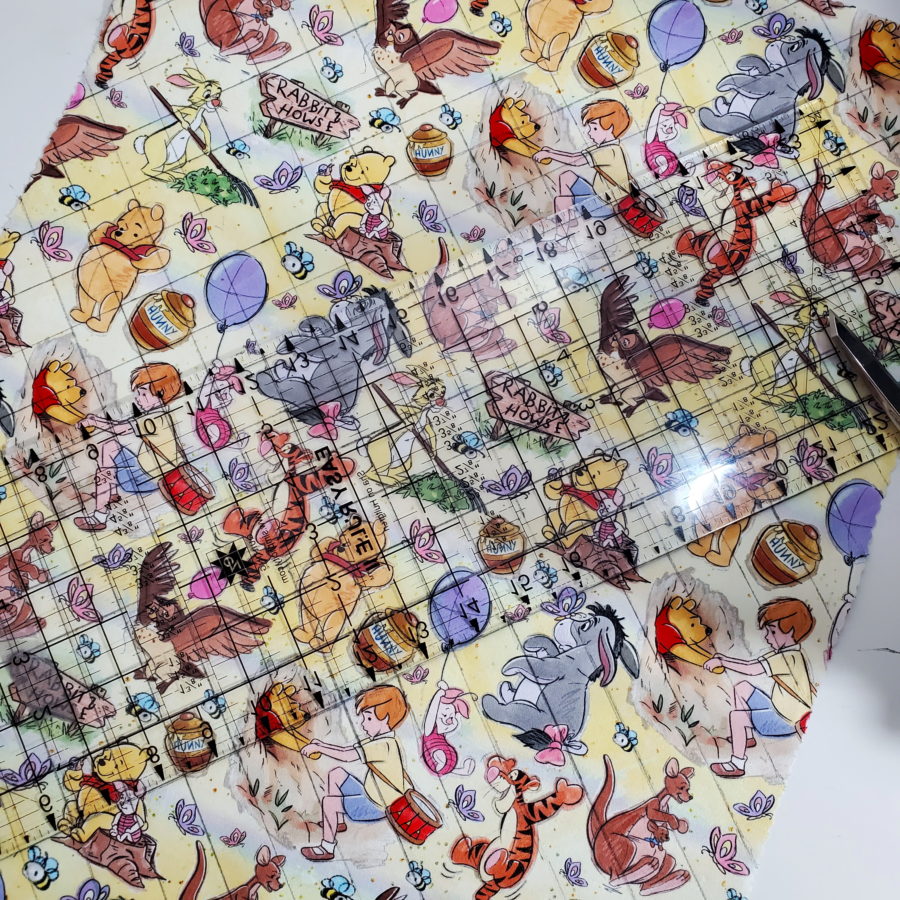
Head on over to your machine and sew along with each one of those lines, being sure to remove your pins as you go.
Press the Iron-On Vinyl
Next, get your iron ready for applying the vinyl. We apply vinyl after quilting to maintain the waterproof layer. Even the tiniest of pinholes can allow moisture in. Run your warm iron over your quilted main piece, removing the marks you previously drew. Next, apply your vinyl to that piece according to the directions on the package. Once you’ve done that, set the piece to the side to allow it to cool.
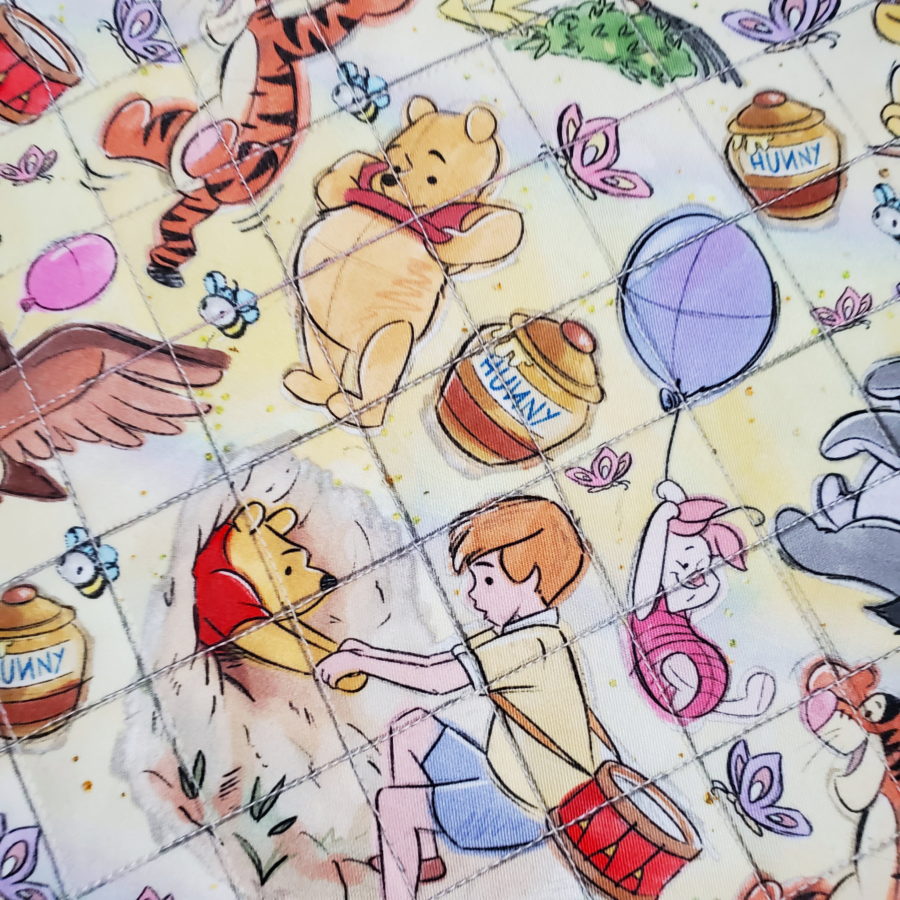
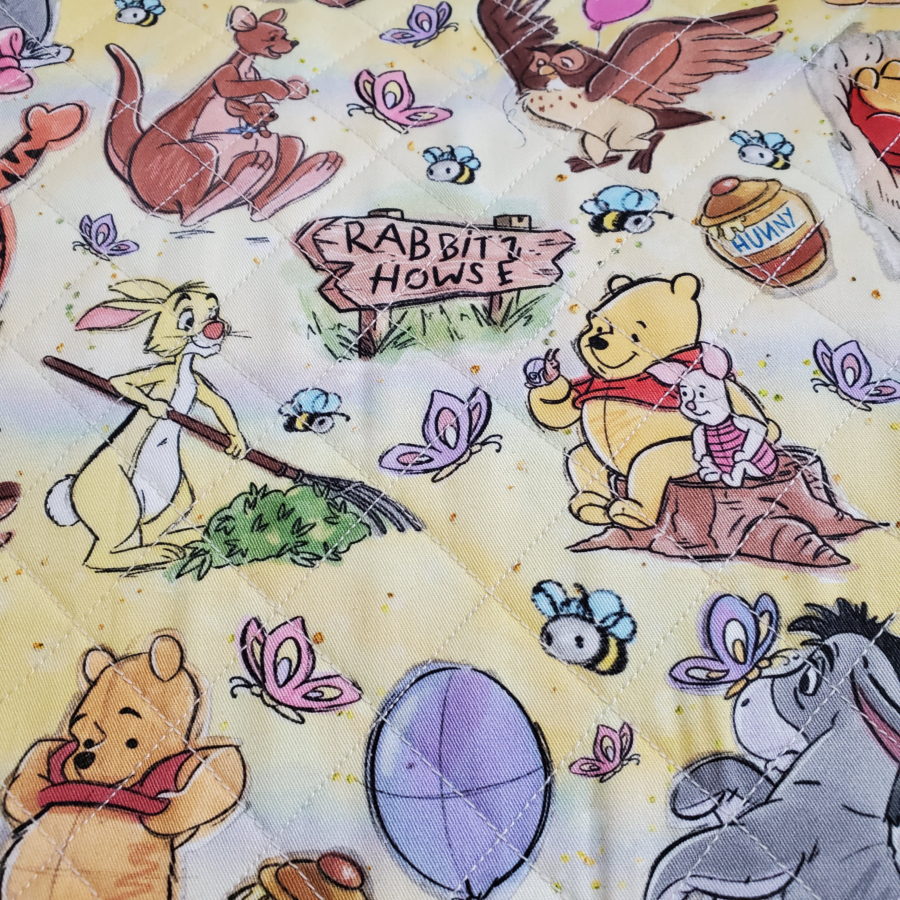
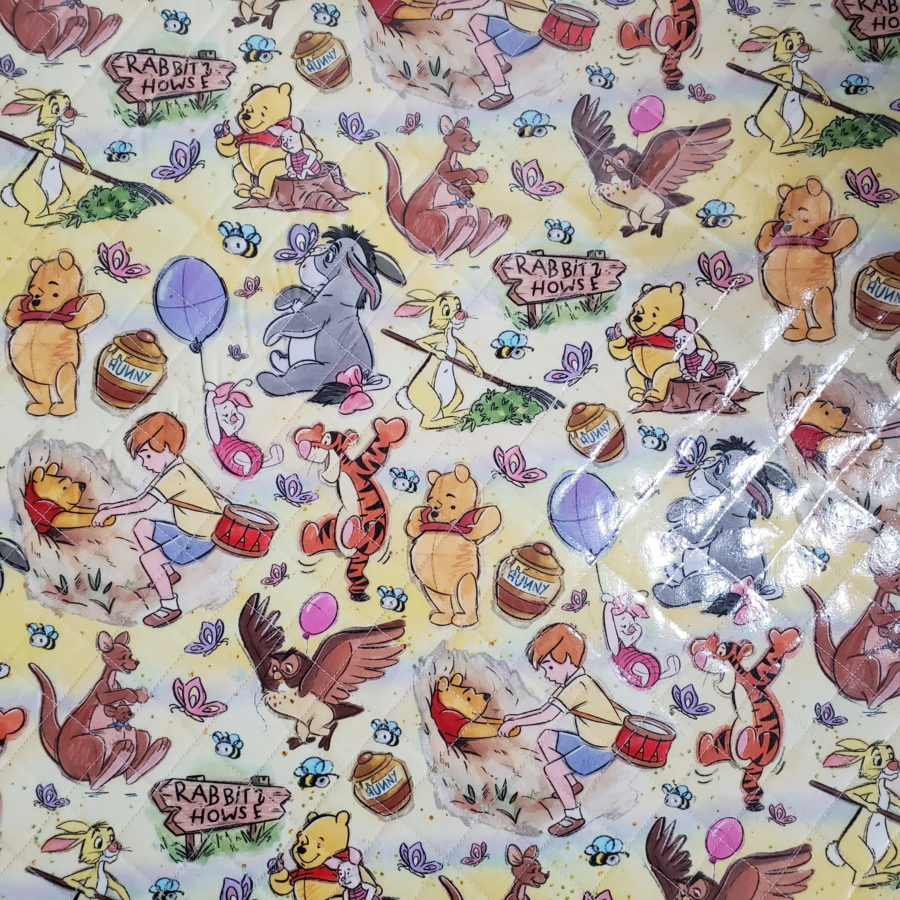
Diaper Pad Side Flap 1
Take your pocket piece for the side flap, and fold it in half so that it measures 17” wide by 5” high. Give it a good press at the crease, and then topstitch at ⅛”.
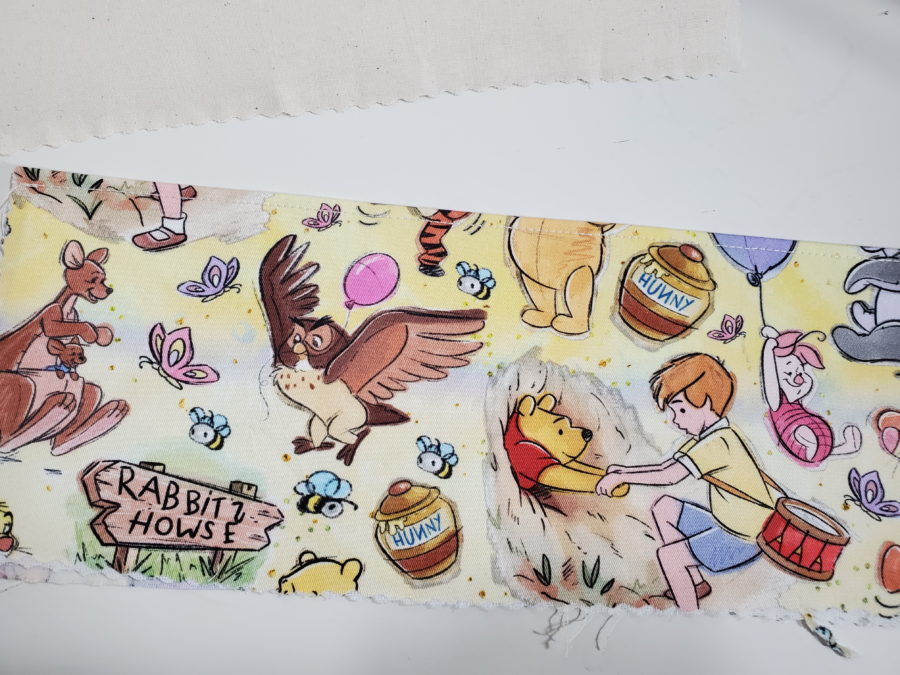
Pin your pocket piece so side flap 1 and match the bottom and side edges. Baste in place at the three unfinished edges of the pocket.
At this point, I like to divide the pocket in half so there is a spot for a few diapers and a spot for a travel-sized pack of wipes. If you chose to do this, you can simply fold the piece in half to get the center point, and then sew along the crease made on the pocket.
Take your other Pocket flap 1 piece and place it on top of the prepped sideslip piece with the pocket, RST.
Sew along the top, left side, and bottom edges, turn right side out, and press well.
Topstitch around the top and down to the pocket but do not topstitch the pocket. Baste the opening closed.
Measure 5 up from the bottom and 15.5″ to the right of the unfinished edge of this piece and place a mark for your snap. Using an awl, make a hole and apply a female snap to the flap. The smooth button side is what should be facing you when your side flap 1 piece is right-side up. Set aside.
Diaper Pad Side Flap 2
Place your lining piece for this flap on top of the fleece-fused piece, right sides together.
Sew along the top left and right sides. Turn right side out and press well. Measure 5″ up from the bottom and 1.5″ to the left of the unfinished edge of this piece and place a mark for your snap. Using an awl, make a hole and apply a male snap to the flap. The snap connecting side should be what is facing when you look at this piece right side up.
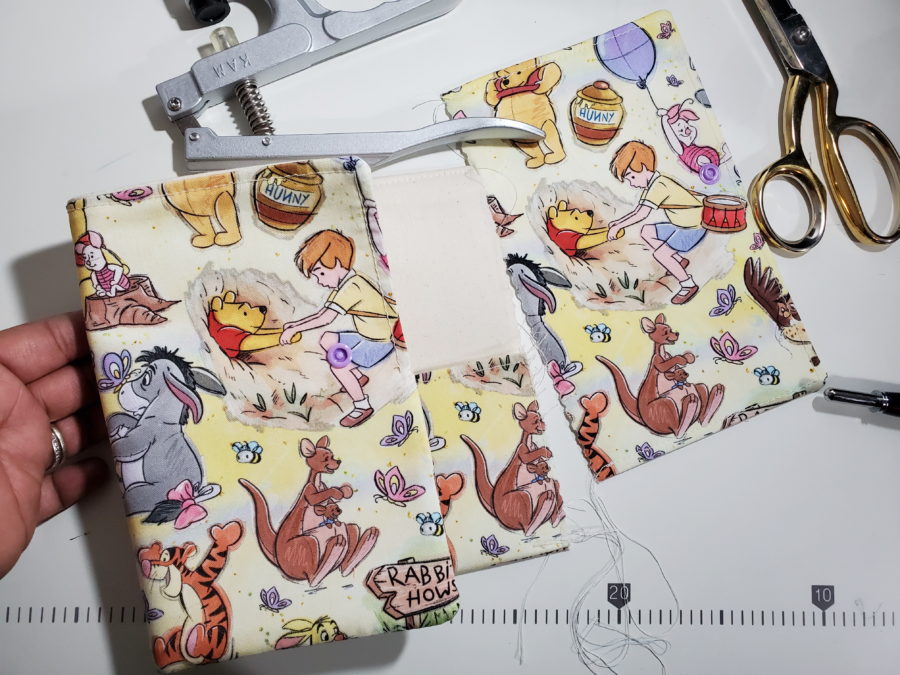
Mark the center points at the bottom of both flaps. Also, find and mark the center point of the main changing pad piece. Match the center points with Side flap 1 on the left, right side down, and side flap 2 on the right, right side down.
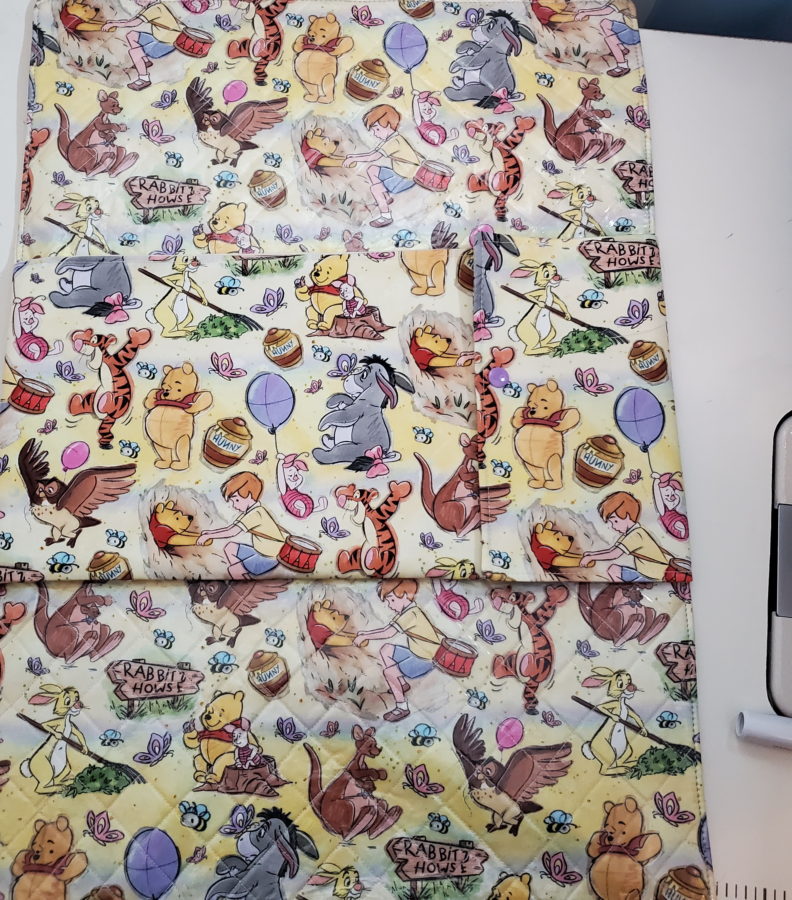
Place your lining or back piece of the main changing pad piece on top wrong side up, and sew around the entire piece leaving an 8” opening at the bottom, or whatever size you are comfortable turning through I use a larger opening to minimize a lot of bunching of the vinyl in the turning process. Once you have turned the piece, smooth it out and if you want, take the protective paper you used previously to attach the vinyl and place it on top of the main piece and give it a quick swipe over the entire changing pad area to smooth out any wrinkles.
Topstitch the Diaper Pad
Topstitch around the entirety of the main changing pad piece closing your turning hole, and moving the flaps as necessary.
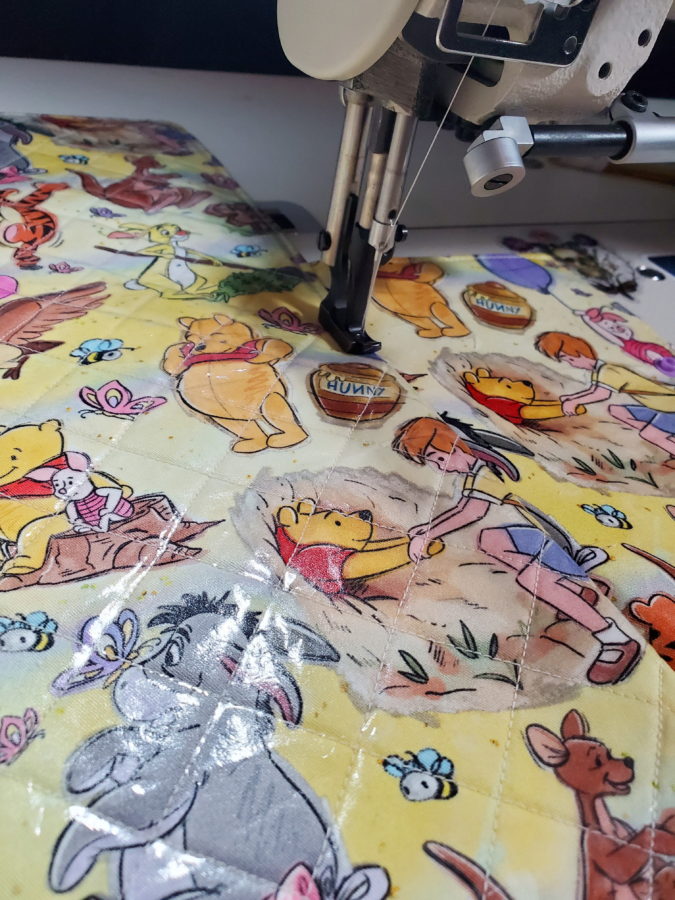
Fold the changing pad in thirds, snap closed and you’re done!
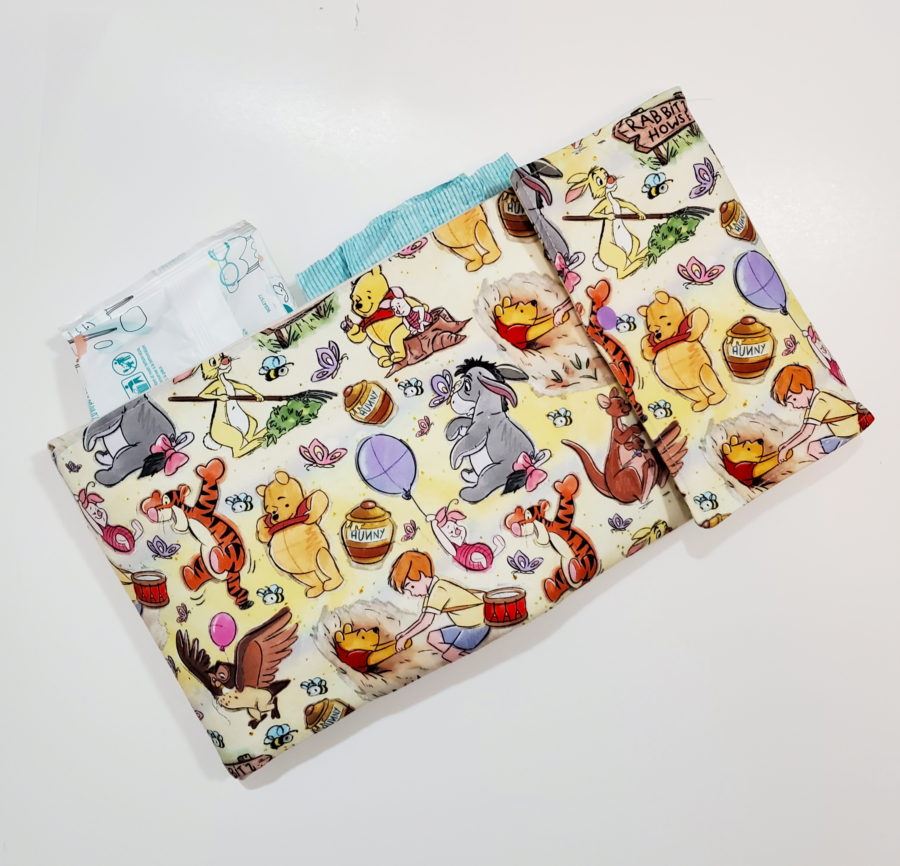

Lauren Chrisman
October 1, 2020 at 7:47 am (5 years ago)Love this!!!